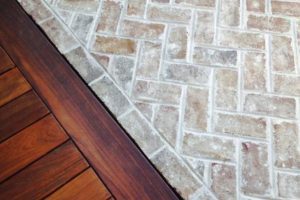Transforming Spaces: The Art of Brick Staining
Brick staining is a transformative practice that has been enhancing the beauty of brickwork since the 1960s, yet remains underutilized in the world of design and renovation. This technique offers a viable, time-tested solution for altering the color of bricks and mortar without compromising the natural texture and integrity of the masonry. The widespread yet often overlooked practice is a testament to the versatility and adaptability of brick as a building material.
The technique of brick staining has been employed in various scenarios to address aesthetic and structural inconsistencies. Often, construction phases or repairs result in a patchwork of brick colors. Staining can harmonize these discrepancies, presenting a unified facade. Bricks from different production runs can show noticeable color variation. Staining ensures color consistency across all brickwork. For new extensions or modifications, staining can match new bricks to existing ones, ensuring seamless integration. Surface flaws like chips or discolorations from lime or pyrite pops can be effectively concealed with staining. Bricks marred by improper cleaning methods can be revived through staining. Updating the look of a building to reflect current trends or personal taste can be achieved while retaining the brick’s natural appeal. When specific hues are required that are not available through standard manufacturing, staining provides a custom solution. Achieving a consistent color across brick units and mortar can mimic the look of painted brick, but with a more natural texture. Altering only the mortar joints can significantly enhance the overall appearance of brickwork, maintaining or updating its aesthetic integrity.
Choosing to stain brickwork offers numerous advantages over the more drastic measure of demolition and rebuilding. Staining is a more economical option, avoiding the high costs associated with tearing down and reconstructing brickwork. The process is quicker than rebuilding, minimizing disruption and downtime. By staining, the original masonry remains intact, maintaining the structural integrity and historical value. Once applied, brick stains require no ongoing maintenance and offer a long-lasting solution. Staining provides a vast palette of color options, allowing for greater design flexibility.
The process involves applying specially formulated ceramic stains and pigments designed for brick and mortar. This task should be entrusted to trained professionals who use materials provided by reputable manufacturers or specialized brick staining contractors. The stain permeates the porous brick surface, ensuring a durable, colorfast finish that withstands various North American climate conditions without affecting the brick’s structural properties.
The art of brick staining is an exemplary solution for those looking to refresh, repair, or repurpose their brickwork. It stands as a testament to the enduring flexibility of brick as a construction material, proving that even the oldest buildings can be given a new lease on life with the right approach. Whether it’s reviving a historic facade or updating a home to fit modern aesthetic standards, brick staining opens up a world of possibilities for architects, builders, and homeowners alike.

